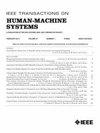Deep Radiomics for Autism Diagnosis and Age Prediction
IF 4.4
3区 计算机科学
Q2 COMPUTER SCIENCE, ARTIFICIAL INTELLIGENCE
引用次数: 0
Abstract
Radiomics combined with deep learning is an emerging field within biomedical engineering that aims to extract important characteristics from medical images to develop a predictive model that can support clinical decision-making. This method could be used in the realm of brain disorders, particularly autism spectrum disorder (ASD), to facilitate prompt identification. We propose a novel radiomic features [deep radiomic features (DTF)], involving the use of principal component analysis to encode convolutional neural network (CNN) features, thereby capturing distinctive features related to brain regions in subjects with ASD subjects and their age. Using these features in random forest (RF) models, we explore two scenarios, such as site-specific radiomic analysis and feature extraction from unaffected brain regions to alleviate site-related variations. Our experiments involved comparing the proposed method with standard radiomics (SR) and 2-D/3-D CNNs for the classification of ASD versus healthy control (HC) individuals and different age groups (below median and above median). When using the RF model with DTF, the analysis at individual sites revealed an area under the receiver operating characteristic (ROC) curve (AUC) range of 79%–85% for features, such as the left深度放射组学用于自闭症诊断和年龄预测
放射组学与深度学习相结合是生物医学工程中的一个新兴领域,旨在从医学图像中提取重要特征,以开发可支持临床决策的预测模型。该方法可用于脑部疾病领域,特别是自闭症谱系障碍(ASD),以促进及时识别。我们提出了一种新的放射学特征[deep radiomic features (DTF)],涉及使用主成分分析来编码卷积神经网络(CNN)特征,从而捕获与ASD受试者及其年龄相关的大脑区域的独特特征。利用随机森林(RF)模型中的这些特征,我们探索了两种场景,即特定位点的放射学分析和未受影响的大脑区域的特征提取,以减轻位点相关的变异。我们的实验涉及将所提出的方法与标准放射组学(SR)和2-D/3-D cnn进行比较,以区分ASD与健康对照(HC)个体和不同年龄组(低于中位数和高于中位数)。当使用RF模型和DTF时,单个部位的分析显示,左侧侧脑室、小脑-白质、白质以及右侧脉络丛和血管等特征的接受者工作特征曲线(ROC)下面积(AUC)范围为79%-85%。在与RF模型进行五重交叉验证的情况下,组合特征(来自3-D CNN、ResNet50、DarketNet53和NasNet_large的DTF与SR)的AUC值最高,为76.67%。此外,我们的方法在预测ASD(80.91%)和HC(75.64%)患者的年龄方面也显示出显著的AUC值。结果表明,DTFs对HC患者的ASD分类和年龄预测具有一致的预测价值。
本文章由计算机程序翻译,如有差异,请以英文原文为准。
求助全文
约1分钟内获得全文
求助全文
来源期刊

IEEE Transactions on Human-Machine Systems
COMPUTER SCIENCE, ARTIFICIAL INTELLIGENCE-COMPUTER SCIENCE, CYBERNETICS
CiteScore
7.10
自引率
11.10%
发文量
136
期刊介绍:
The scope of the IEEE Transactions on Human-Machine Systems includes the fields of human machine systems. It covers human systems and human organizational interactions including cognitive ergonomics, system test and evaluation, and human information processing concerns in systems and organizations.
 求助内容:
求助内容: 应助结果提醒方式:
应助结果提醒方式:


